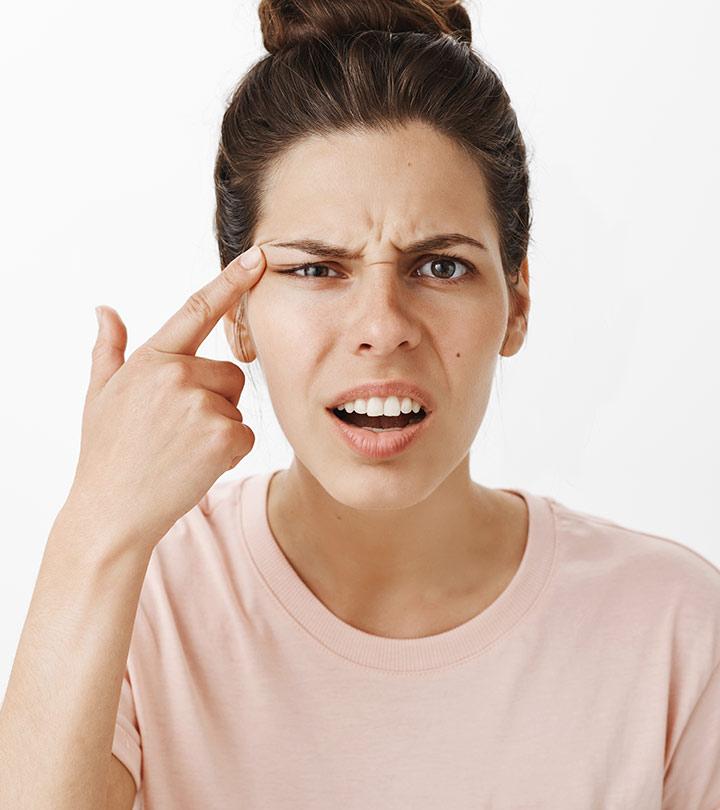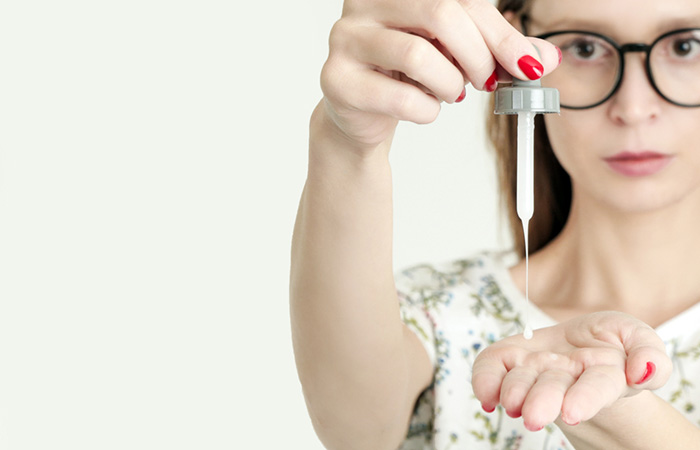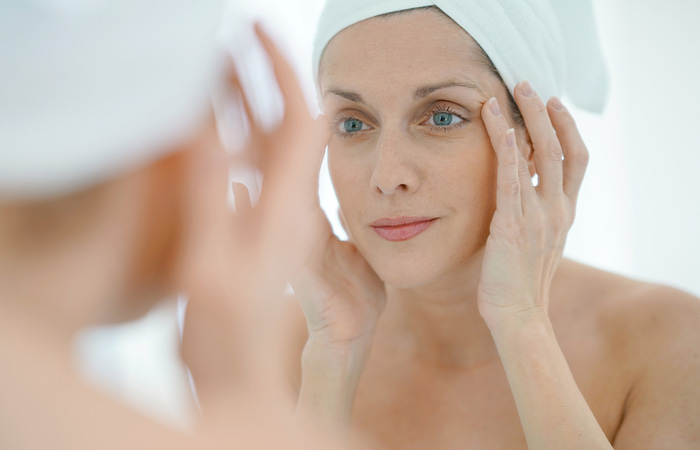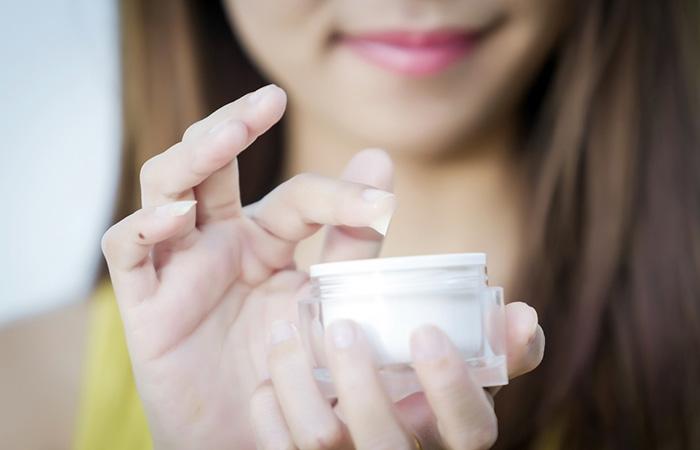How To Use Retin-A (Tretinoin) For Wrinkles And Skin Aging
Improve skin texture and keep aging signs at bay with this potent ingredient.

Tretinoin (Retin-A) is one of the most potent ingredients to fade signs of aging. You can never go wrong with Retin-A for wrinkles as it works to improve skin texture and tone to minimize the signs of aging and keep the skin youthful. Retin-A also helps fade dark spots and pigmentation to make your skin brighter. While tretinoin is quite potent, you must be patient to experience visible results. This article explains why Retin-A should find a permanent spot in your anti-aging skin care routine. Read on.
In This Article
What Is Retina-A Or Tretinoin? How Does It Work On Your Skin?
Shutterstock
Tretinoin or Retin-A belongs to the retinoid family (derived from vitamin A). Usually, retinoids are used topically for treating skin issues such as acne, melasma, psoriasis, etc. Tretinoin is the most studied retinoid. It was only in 1984 that the potential of Tretinoin in treating photoaging was discovered. Researchers tested the effect of tretinoin on mouse skin for 10 weeks and found that it increased collagen production and reduced wrinkles and fine lines (1).
There are a lot of scientific studies that prove the efficacy of tretinoin as a potent anti-aging topical medicine. Let’s take a look.
Tretinoin For Anti-Aging Benefits: What Does Research Say?
Shutterstock
In a randomized, parallel, and double-blinded study, the participants used retinol and tretinoin on their skin for three months. After three months, a significant improvement in their wrinkles, photodamage, and pigmentation levels was observed, with very mild adverse effects. The study concluded that even through tretinoin could help improve wrinkles and other signs of aging, it might cause irritation, such as redness and/or dryness, which is a common side effect of topical retinoids (2).
Another double-blinded study observed the effects of tretinoin on photoaged skin. The study suggested that applying 0.5% tretinoin cream daily not only boosted collagen formation but also improved the skin texture and skin tone and facilitated the development of new blood vessels (angiogenesis) (3).
While you can feel the effect of tretinoin on your skin right after a few weeks, you will see major changes in the long run. A study found that tretinoin improved the clinical signs of photoaging in the participants, but significant differences were observed after six months of using the cream continuously. The study was then extended to six more months, with the participants now using the cream one to three times per week. The results showed more improvements in the overall signs of photoaging (4).
Tretinoin is a potent medication for anti-aging. However, you need to use it properly to get the most out of it.
How To Use Tretinoin Or Retin-A For Signs Of Aging
Shutterstock
- Avoid using tretinoin during daytime. Always apply the cream at night, before going to bed. This ensures your skin gets time to absorb the medication and improves its efficacy.
- Avoid pairing tretinoin with benzoyl peroxide. It’s best not to use it with other acid products, such as salicylic acid, glycolic acid, and vitamin C.
- Cleanse your face before applying tretinoin or any other skin care product. If you are layering tretinoin with any other skin care product, wait for at least 15 minutes before you apply tretinoin.
When used in the right way, tretinoin improves your skin cell turnover and slows down the development of lines and wrinkles. But, you have to be patient.
How Long Does It Take For Tretinoin To Work?
Shutterstock
It will take several months before you see actual results.
A study observing the effect of tretinoin on Caucasian skin concluded that tretinoin therapy should be continued for at least six months to notice visible changes in the skin. The subjects observed no significant difference in their skin for the first six months. However, after 12 months, new collagen fibers developed, and researchers observed overall improvement in their skin (1).
In another study, the researchers observed visible results after 84 days. They found significant improvement in supralabial wrinkles, pigmentation, and nasolabial folds (laugh lines) (2).
Despite its impressive benefits, tretinoin might cause some side effects.
Side Effects Of Tretinoin
Shutterstock
Your skin needs some time to adjust to retinoids. If you are using tretinoin for the first time, you might experience initial side effects, such as:
- Skin dryness
- Irritation
- Stinging sensation
- Itching
- Scaling
- Mild burning
Introduce it to your skin gradually. Start with a twice-a-week routine and stick to it for the first two months. You can also talk to your doctor and get an idea about how to use it properly.
Also, before you start using tretinoin, be aware of the following things.
Things To Consider Before Using Tretinoin
Shutterstock
- In case you are considering any facial treatment, such as laser treatments or chemical peels, don’t forget to consult your doctor and inform them that you are using tretinoin. Tretinoin might interfere with other skin treatments, and the doctor might suggest you stop using it for a certain time before and after you undergo the facial treatment.
- Avoid using tretinoin if you are pregnant.
- Tretinoin and other retinoids exfoliate your skin and make it sensitive to the sun. So, use sun protection and try not to expose your skin to the sun for long periods to prevent damage. Use a sunscreen that has at least SPF 30 and consider wearing a hat when outdoors.
If you have just introduced your skin to Retin-A, you may notice breakouts and experience minor skin irritation. Do not discontinue using it as retinol and its derivatives usually cause skin purging before showing any results. This should not stop you from using Retin A for wrinkles, fine lines, and other aging issues. However, always start with a lower concentration. Consult a doctor to determine the right strength of tretinoin for your skin and the correct way to use it. This will help avoid unwanted skin reactions and irritation.
Frequently Asked Questions
Which is better for wrinkles: retinol or Retin-A?
According to anecdotal evidence, Retin-A is better. Its main active ingredient is retinoic acid, which reduces wrinkles more effectively than any other anti-aging product.
Does Retin-A tighten the skin under the eyes?
Yes. Retin-A helps boost collagen production and reduces wrinkles and fine lines that help tighten the skin under the eyes.
Do I need to wash tretinoin off in the morning?
No. If you have applied tretinoin to the skin, wait at least for 1 hour before washing it.
What moisturizer should I use with tretinoin?
Tretinoin may dry your skin or make it sensitive to the sun. Use a water-based, hydrating moisturizer with SPF.
Sources
Articles on StyleCraze are backed by verified information from peer-reviewed and academic research papers, reputed organizations, research institutions, and medical associations to ensure accuracy and relevance. Read our editorial policy to learn more.
- “Retinoids in the treatment of skin aging..”, Clinical Interventions in Aging, US National Library of Medicine.
- “A double-blind randomized study comparing..”, Wiley Online Library
- “Topical tretinoin for photoaged skin.”, Journal of the American Academy of Dermatology, US National Library of Medicine.
- “Photoaging and the skin. The effects of tretinoin.”, Dermatologic Clinics
, US National Library of Medicine.


















